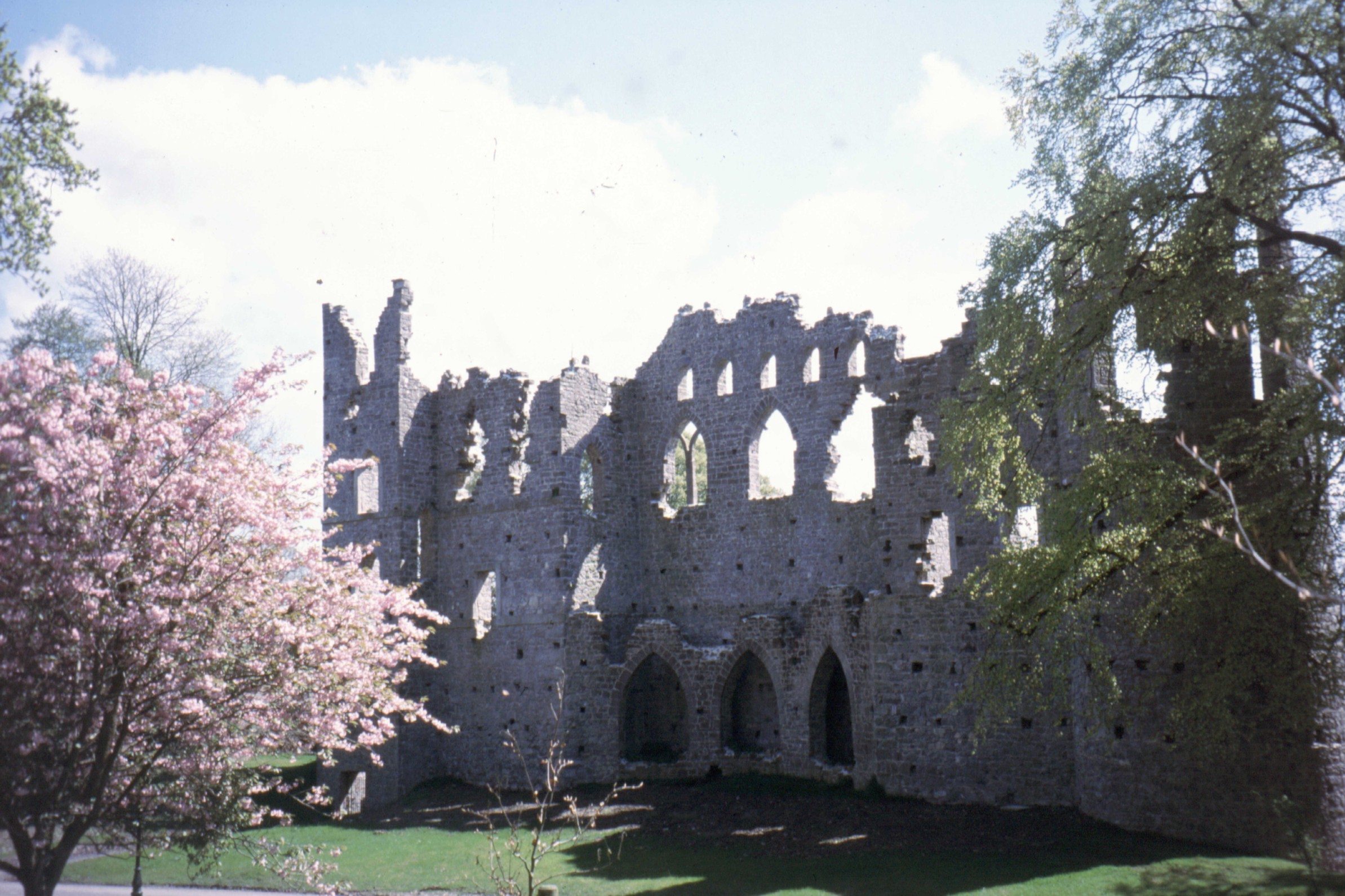by Steenie Harvey
Ireland’s wealthy Georgian and Victorian landowners developed a taste for erecting architectural oddities known as follies. Here are five places open to the public where you can admire (or perhaps despair over) their romantic visions of a folly-dotted "Arcadian Landscape."
1. Dating from the 1790s, Kilfane Glen in county Kilkenny was a favorite with Victorian gentry visiting Kilfane House. They adored coming across its artificial waterfall, hermit’s grotto and a tiny folly known as a cottage ornée (ornamental cottage). Open July and August from 11 a.m. to 6 p.m. Other times by appointment: Tel. +353 (0)56-7724558.
2. Near Oldcastle in county Meath, the original Loughcrew House was destroyed by fire (reputedly due to a curse), but its gardens and follies have been restored to their 19th-century glory. Here the Temple of the Winds is a sham Roman ruin. Discovering Ireland’s weather was wetter than back home, the Welsh workmen who constructed this folly nicknamed it the Temple of the Rains. There’s also a "Grotesque Rockery and Grotto," a Hellfire garden, a water-mill cascade and spooky woodland maze. Open daily from 12:30 to 5:00 p.m. mid-March to end of September. Winter hours are restricted to Sundays and Bank Holiday afternoons. Tel. +353 (0)49-8541356.
3. Near Kilcock in county Kildare, Larchill Arcadian Garden was created as a Ferme Ornée or Ornamental Farm. The fashion was set by Marie Antoinette of France who played at being a milkmaid at Versailles. Larchill has 10 follies. Sited on a lake where mock naval battles were once waged, one of its 10 follies is a miniature fortress. Even weirder is the "Foxes Earth," built as an afterlife refuge in the 18th century by a Mr. Watson who believed he would be reincarnated as a fox. In the walled garden, a tower folly is lined with shell decorations. Mrs. Watson loved the Shell Tower so much she was buried there. Her ghost reputedly haunts Larchill, still distressed at her bones later being moved into a churchyard. Open between June and August, Tuesday to Sunday. Other times by appointment. Tel . +353 (0)1-6287354.
4. Between Maynooth and Leixlip, Castletown House has an obelisk adorned with stone eagles and pineapples. It was once described as a "140-ft. high monument to chimney-sweeping." The second folly is the Wonderful Barn. 73 feet high, flanked by two smaller dovecote towers, this conical-shaped building has 94 stone steps corkscrewing around its exterior. In Georgian times, doves were often served as a delicacy. Both follies provided work for estate workers hit by the 1739 famine. They got paid a half-penny per day. Open from late April to end of September, 10:00 a.m. to 6:00 p.m. weekdays, afternoons only at weekends. Tel. +353 (0)1-6288252
5. Near Mullingar in county Westmeath, 18th-century Belvedere House overlooks
Lough Ennel. The 1st Earl of Belvedere accused his wife of adultery with his brother Arthur and imprisoned her in the house for 31 years. But it wasn’t an illicit love affair that led to the building of Belvedere’s "Jealous Wall." The Earl was also in dispute with another brother, George. The wall was erected to block out the view between Belvedere and George’s house, less than half a mile away. Over 180 feet long, it resembles a 3-story ruined priory and enjoys the title of Ireland’s biggest folly. Belvedere stays open all year. Tel. +353 (0)44-9349060
To buy this article for use in another publication click here

 Lough Ennel. The 1st Earl of Belvedere accused his wife of adultery with his brother Arthur and imprisoned her in the house for 31 years. But it wasn’t an illicit love affair that led to the building of Belvedere’s "Jealous Wall." The Earl was also in dispute with another brother, George. The wall was erected to block out the view between Belvedere and George’s house, less than half a mile away. Over 180 feet long, it resembles a 3-story ruined priory and enjoys the title of Ireland’s biggest folly. Belvedere stays open all year. Tel. +353 (0)44-9349060
Lough Ennel. The 1st Earl of Belvedere accused his wife of adultery with his brother Arthur and imprisoned her in the house for 31 years. But it wasn’t an illicit love affair that led to the building of Belvedere’s "Jealous Wall." The Earl was also in dispute with another brother, George. The wall was erected to block out the view between Belvedere and George’s house, less than half a mile away. Over 180 feet long, it resembles a 3-story ruined priory and enjoys the title of Ireland’s biggest folly. Belvedere stays open all year. Tel. +353 (0)44-9349060 